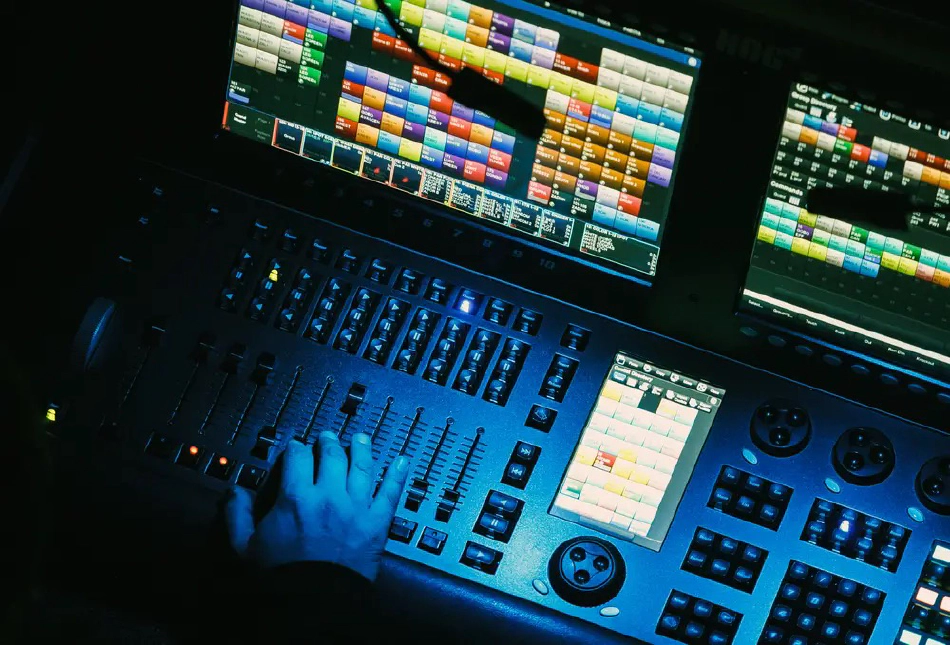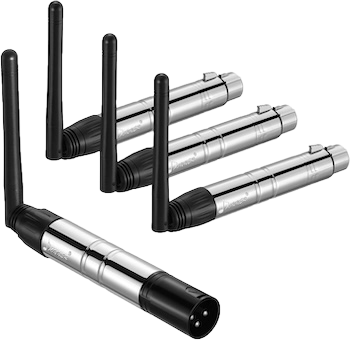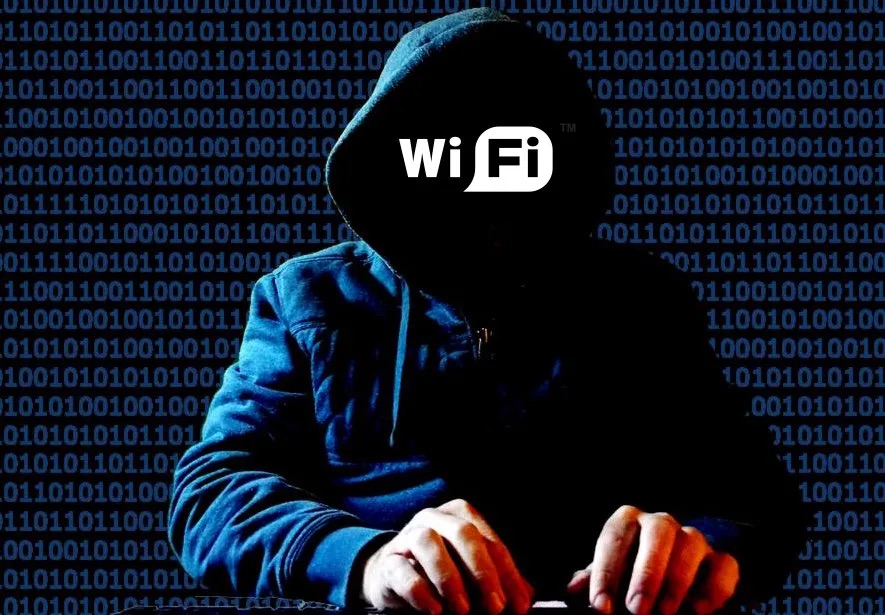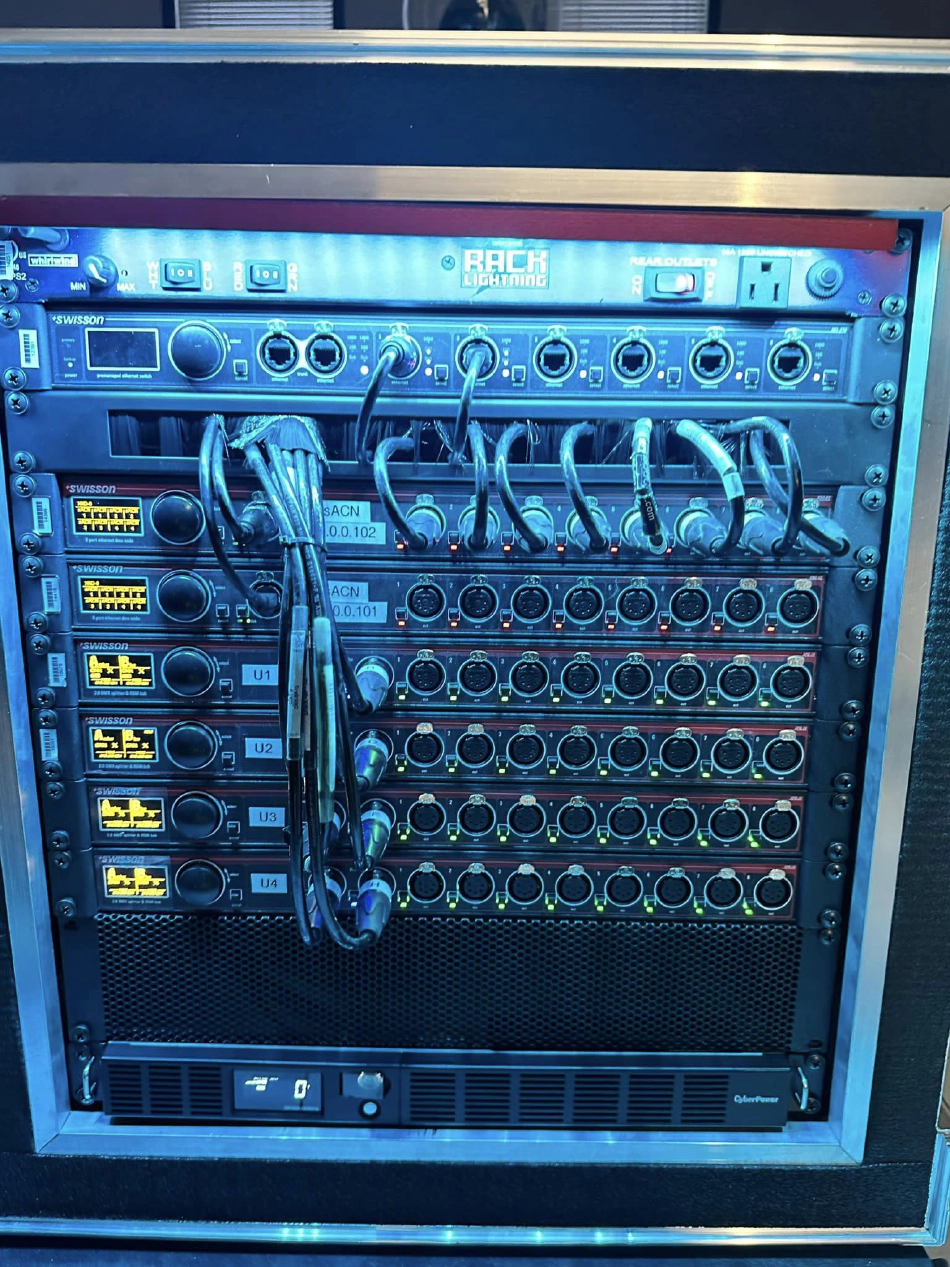Understanding the Security Challenges in Event Lighting
Explore the intricacies of event lighting protocols, uncover hidden vulnerabilities, and learn best practices to ensure robust security in event productions.
In the dynamic and ever-evolving realm of event production, there exists a world that often goes unnoticed by the average spectator. Beneath the captivating dance of lights, the rhythmic beats of music, and the awe-inspiring spectacle of live performances, there lies a sophisticated and intricate technological backbone. This system, often taken for granted, is the silent force that orchestrates the magic we witness on stage. Delving deeper into the core of event lighting systems, one discovers a vast landscape where cutting-edge innovation seamlessly intertwines with potential vulnerabilities.
In today’s digital age, the realm of lighting has transcended beyond mere illumination. It has expanded to encompass a myriad of devices, from simple spotlights to advanced motion-controlled fixtures, each bringing its own set of challenges and risks. As we stand at the intersection of technology and artistry, the once-clear boundaries begin to blur, giving rise to a new set of challenges. The imperative to safeguard these intricate systems, ensuring both the spectacle’s continuity and the safety of its participants, becomes more paramount than ever before.
Disclaimer: This article aims to enlighten and educate. Unauthorized meddling with any system, especially those governing physical equipment, can lead to dire consequences, including potential harm. With the expanding landscape of DMX-controlled devices, which now includes not just lights but also motors, pyrotechnics, stage risers, and more, the potential risks are significant. Always prioritize safety and ensure that systems are secure. Unauthorized tampering with systems is illegal and unethical.
Understanding Lighting Protocols: From DMX to ArtNet

DMX - The Foundational Pillar
DMX, or Digital Multiplex, originated in the early 1980s as a standardized method for controlling lighting equipment, especially dimmers. Born out of a need for consistency in an industry rife with proprietary systems, DMX512, as it’s formally known, quickly became the industry standard. Its technical specifications are straightforward: a serial communication method that operates over a differential pair using a maximum data rate of 250 kbit/s. Each DMX “universe” supports up to 512 channels, with each channel controlling a specific attribute of a fixture, such as brightness or color. Its simplicity, reliability, and robustness in live event scenarios cemented its position as the go-to protocol for decades.
sACN & ArtNet - The Digital Leap
As event productions grew in scale and complexity, the limitations of DMX became evident. Enter sACN (Streaming Architecture for Control Networks) and ArtNet, both designed to leverage the capabilities of Ethernet and IP-based communication. sACN, a standard by PLASA, is built atop the ACN (Architecture for Control Networks) suite, offering a more streamlined approach to handling large numbers of DMX universes. ArtNet, developed by Artistic Licence, was one of the first protocols to encapsulate DMX frames within IP packets, allowing for vast expansions in channel count and universes. Both protocols brought about flexibility, allowing for remote configuration, feedback mechanisms, and the ability to handle modern, complex lighting setups.
Protocol Comparison
When placed side by side, each protocol has its merits. DMX, with its direct, point-to-point communication, offers unparalleled reliability, especially in environments with potential interference. However, its limitation to 512 channels per universe can be restrictive for grand productions. sACN and ArtNet, with their IP-based communication, break this channel barrier, offering virtually limitless universes. They also bring the advantage of network-based feedback, remote configuration, and integration with modern IT infrastructure. However, they require a deeper understanding of network configurations, and their IP nature introduces potential security vulnerabilities.
The Vulnerabilities
The shift from a closed, point-to-point system like DMX to open, networked protocols like sACN and ArtNet inherently introduces security challenges. While DMX’s primary vulnerabilities lie in its physical connections (e.g., cut or disconnected cables), sACN and ArtNet face threats from network intrusions. Without proper network security measures, these protocols can be susceptible to man-in-the-middle attacks, packet sniffing, and unauthorized access. The very features that make them flexible and powerful, like remote configuration, can also be their Achilles’ heel if not properly secured.

The Wireless Era - Freedom and Fragility
The Shift to Wireless
The evolution of event lighting took a significant turn with the introduction of wireless technology. Gone were the days of cumbersome cables, restrictive placements, and tedious setups. With wireless, lighting designers gained the freedom to place fixtures in previously inaccessible locations, from high rafters to remote outdoor spots. This newfound flexibility allowed for more dynamic and immersive light shows, transforming the very essence of event experiences. The ability to control and adjust lights in real-time, from anywhere within the venue, opened up a world of creative possibilities. However, with this freedom came a new set of challenges, chief among them being the security and reliability of wireless transmissions.
Common Wireless Setups
In the quest for wireless convenience, various setups emerged. The most common involved using wireless DMX transceivers, which converted traditional DMX signals into radio frequencies. These devices, often plug-and-play, allowed for quick conversions of wired setups into wireless ones. Another prevalent method was integrating wireless modules directly into lighting fixtures, enabling them to receive signals without external transceivers. While these configurations simplified setups, they often relied on off-the-shelf wireless technologies with minimal customization. As a result, many systems operated on common frequency bands, making them susceptible to interference and unauthorized access.

Case Studies
The vulnerabilities of wireless lighting systems aren’t just theoretical; they’ve manifested in real-world scenarios. In one notable incident, a high-profile concert experienced erratic lighting behaviors, later traced back to unauthorized wireless access. In another case, a theater production faced intermittent blackouts, a result of signal interference from nearby electronic devices. These incidents underscore the fragility of wireless setups and the potential disruptions they can cause. Beyond mere inconveniences, such breaches can compromise the safety of events, especially when critical fixtures like stage risers or pyrotechnics are involved.
Securing the Airwaves
Recognizing the vulnerabilities of wireless systems, the industry has been working diligently to fortify them. Best practices have emerged, emphasizing the importance of encrypted transmissions, which scramble signals to prevent unauthorized interception. Frequency hopping, a technique where signals jump between different frequencies, has been adopted to counteract interference. Additionally, the use of dedicated frequency bands, separate from common consumer electronics, has been advocated. On the network side, robust password protections, hidden SSIDs, and firewalls have become standard recommendations. As the adage goes, the best defense is a good offense; proactive measures, regular system audits, and continuous education are the industry’s best bets against wireless vulnerabilities.
Exploits in the Wild - A Hacker’s Toolkit

Network Sniffing
In the vast realm of cyber exploits, network sniffing stands as one of the primary techniques employed by attackers to intercept data. By using tools like Wireshark or tcpdump, malicious actors can capture and analyze packets transmitted over a network. In the context of wireless lighting systems, sniffing can reveal command sequences, device configurations, and even authentication credentials. Once intercepted, this data can be studied and replicated, allowing attackers to mimic legitimate commands or even introduce their own. The very nature of wireless transmissions, broadcasting data through the air, makes them especially vulnerable to sniffing, emphasizing the need for encrypted communications.
Packet Injection
Beyond merely intercepting data, attackers can introduce or ‘inject’ malicious packets into a network stream. Tools like Scapy or Aircrack-ng facilitate this, allowing for the crafting of custom packets. In a lighting setup, malicious packet injection can lead to erratic behaviors, from unintended light sequences to complete blackouts. More alarmingly, if an attacker understands the protocol intricacies, they can craft packets that alter device configurations, change network settings, or even reset devices to factory defaults. Such disruptions can wreak havoc during live events, compromising both the show’s quality and safety.
Man-in-the-Middle Attacks
One of the more insidious techniques in a hacker’s arsenal is the Man-in-the-Middle (MitM) attack. Here, attackers position themselves between the communication source and destination, intercepting and potentially altering data in real-time. Tools like ARPspoof or BetterCAP facilitate MitM attacks, allowing for real-time data capture and manipulation. In the world of event lighting, a successful MitM attack can give attackers live control of lighting systems, enabling them to alter light sequences on-the-fly or introduce their own commands, all while the legitimate operator remains oblivious.
Brute Forcing Access Points
Wireless lighting systems, like any wireless network, are protected by access points requiring authentication. However, weak or default passwords can be vulnerable to brute force attacks. Using tools like Hydra or Wifite, attackers can automate password guessing, cycling through thousands of potential combinations in minutes. Once access is gained, the entire lighting network becomes vulnerable, allowing for data interception, packet injection, or even complete system takeovers.
Potential Damage
The implications of these exploits extend beyond mere technical disruptions. At a basic level, unauthorized access can disrupt events, leading to reputational damage and financial losses. But the stakes are even higher. Modern lighting systems control more than just lights; they interface with stage risers, motors, and pyrotechnics. A malicious actor with control over these systems can cause physical harm, endangering performers and audiences. A misfired pyrotechnic or a malfunctioning stage riser can result in catastrophic consequences. As such, the importance of securing lighting systems, both from a performance and safety perspective, cannot be overstated.
Red-Teaming - An Insider’s Deep Dive
The Setup
Red-teaming, in essence, is a simulated attack on a system to test its vulnerabilities. When I was approached by a large, cannot-be-named event company to assess the security of their traveling setup for a world-famous performer (whose name remains confidential), the gravity of the task was palpable. The objectives were clear: identify vulnerabilities in their wireless lighting and control systems, attempt to exploit them, and document the findings. Before embarking on this mission, it was essential to define the boundaries. Ethical considerations were paramount. Every action taken would be with the intent of improving security, not causing harm. With the rules of engagement established, the red-teaming exercise commenced.
The Execution
The initial reconnaissance involved discreetly observing the setup process, noting the equipment used, identifying potential wireless access points, and gauging the overall complexity of the system. Armed with a suite of tools, from network sniffers to packet injectors, the actual probing began. The first point of entry targeted was a seemingly innocuous wireless access point, set up for the convenience of the lighting team. A combination of network sniffing and password brute-forcing provided the initial breakthrough. Once inside the network, the real exploration began. Traversing through the system, several vulnerabilities became apparent: unencrypted data transmissions, default device configurations, and a lack of network segmentation. The climax of the exercise involved successfully injecting custom light sequences into the show, a harmless yet undeniable proof of system compromise.
Findings & Revelations
The red-teaming exercise unearthed a series of vulnerabilities, some expected and others surprising. The reliance on default configurations and weak passwords was a known industry issue, but the lack of data encryption and network segmentation in such a high-profile setup was startling. Additionally, the ability to remotely access and control critical devices, from lights to pyrotechnics, highlighted the potential dangers lurking in the system. Documenting these findings was meticulous, ensuring that every vulnerability was accompanied by a potential solution or mitigation strategy.
The Debrief
Presenting the findings to the event company was a mix of apprehension and responsibility. Their initial reaction was one of disbelief, quickly followed by gratitude. The exercise had laid bare the vulnerabilities in their system, but it also provided a roadmap for improvement. The company’s commitment to rectifying the issues was commendable. They initiated immediate changes, from strengthening network security to conducting regular audits. The red-teaming exercise, while revealing, became a catalyst for positive change, emphasizing the importance of proactive security measures in the ever-evolving world of event production.

Beyond Lighting - The Integrated Event Ecosystem
The Interplay of Systems
In the grand theater of event production, lighting is but one actor on a stage filled with a myriad of technical marvels. It dances in harmony with sound systems that resonate with the beats of music, visuals that paint stories on screens, and mechanical systems that move stages and props. This intricate ballet is choreographed to perfection, ensuring that each element complements the other, creating a cohesive and immersive event experience. The synchronization of these systems, often controlled through integrated consoles and networks, is a testament to the advancements in event technology. However, this interplay, while mesmerizing, also introduces complexities, especially when considering the security of the integrated ecosystem.
Potential Chain Reactions
The interconnected nature of modern event systems means that a vulnerability or breach in one can have ripple effects, impacting others. Consider a scenario where a compromised lighting system sends erratic signals to a visual system, causing screens to display unintended content. Or imagine a more dire situation where a breach in the lighting protocol inadvertently triggers pyrotechnics or mechanical systems, leading to potential hazards. These chain reactions can be swift and unpredictable, turning a minor glitch into a major disruption. The stakes are not just about ensuring a seamless show; they’re about safeguarding the safety of performers, crew, and audiences.
Securing Integrated Systems
The challenge of securing an integrated event ecosystem is multifaceted. It’s not just about fortifying individual systems but ensuring that the interplay between them is secure. This requires a holistic approach, where security measures are implemented at every touchpoint, from device configurations to network transmissions. Best practices include:
-
Network Segmentation: Dividing the network into distinct zones, ensuring that systems like lighting, sound, and visuals operate on separate networks. This limits the potential spread of breaches and contains threats.
-
Regular Audits: Conducting frequent security assessments to identify and rectify vulnerabilities. This proactive approach helps in staying ahead of potential threats.
-
Unified Security Protocols: Implementing consistent security measures across all systems, ensuring that there are no weak links in the chain.
-
Continuous Education: Keeping teams updated on the latest security threats and best practices. A well-informed team is the first line of defense against breaches.
-
Emergency Response Plans: Having protocols in place to quickly address and mitigate any security incidents, ensuring minimal disruption and maximum safety.
The Path Forward - Industry Responses & Best Practices
The Wake-Up Call
As the digital age advances, the event production industry finds itself at a crossroads. The increasing sophistication of cyber threats, coupled with the high-profile nature of events, has sounded alarm bells. No longer can security be an afterthought; it must be at the forefront of every decision, every setup, and every performance. Recognizing the gravity of the situation, industry leaders, manufacturers, and event organizers have begun to prioritize cybersecurity. From adopting stringent security protocols to investing in state-of-the-art protective technologies, the industry is undergoing a paradigm shift, acknowledging that in the world of live events, there’s no room for complacency.
Training & Workshops
Knowledge is power, and in the battle against cyber threats, it’s the most potent weapon. Recognizing this, the industry has seen a surge in training programs and workshops focused on cybersecurity. These sessions, often led by experts in the field, aim to equip professionals with the skills and knowledge to identify, prevent, and mitigate threats. From understanding the intricacies of protocols like DMX and ArtNet to hands-on training with security tools, these workshops are creating a new breed of tech-savvy professionals, ready to defend the sanctity of their events.
Collaborative Defense
The complexity of modern event setups demands an interdisciplinary approach to security. It’s no longer just the domain of IT professionals; lighting designers, sound engineers, visual artists, and even stage managers play a crucial role. This collaborative defense strategy emphasizes the importance of communication and teamwork. By pushing for an environment where professionals from different disciplines share insights, discuss potential vulnerabilities, and brainstorm solutions, the industry is building a robust defense mechanism. It’s a collective effort, where every team member, regardless of their role, is a guardian of the event’s security.
Future Tech
As technology continues to evolve, so do the tools and methods to protect it. The horizon is promising, with innovations like AI-driven security systems, quantum encryption, and blockchain-based authentication mechanisms. These technologies, while in their nascent stages, hold the potential to revolutionize event security. For instance, AI systems can monitor network traffic in real-time, identifying and neutralizing threats before they materialize. Quantum encryption, with its unbreakable code, promises a future where data transmissions, be it lighting commands or sound sequences, are impervious to breaches. While these technologies are still maturing, their potential implications for the industry are profound, offering a glimpse into a future where events are not just spectacular but also impenetrable.
Hands-On - DIY Security for Lighting Systems
Home Labs
For those passionate about understanding the intricacies of lighting system vulnerabilities, setting up a home lab can be an invaluable experience. A personal lab allows for hands-on experimentation without the risks associated with live event setups. Begin by sourcing basic lighting equipment, controllers, and wireless transceivers. Open-source software tools can emulate many of the protocols and systems used in professional setups. With a modest investment, one can replicate a miniaturized version of a full-scale event lighting system. This controlled environment is perfect for learning, testing, and understanding the nuances of different protocols and their potential vulnerabilities.

Penetration Testing
Once your home lab is operational, the next step is to don the hat of an ethical hacker. Penetration testing, or “pen testing,” involves simulating cyberattacks on your system to identify vulnerabilities. Tools like Nmap, for network scanning, or Metasploit, for vulnerability exploitation, can be invaluable. Start by probing your network, identifying open ports, and understanding the data flow. Then, attempt to exploit known vulnerabilities in the protocols you’re using. Remember, the goal isn’t to cause damage but to identify weak points. Document your findings, noting down potential entry points, data leakages, or system misconfigurations. This hands-on approach provides a deep understanding of the threats facing lighting systems and the methods malicious actors might employ.
Hardening Your System
Identifying vulnerabilities is only half the battle; the real challenge lies in fortifying your system against potential threats. Here’s a step-by-step guide to securing an event lighting setup:
-
Update Regularly: Ensure all your equipment firmware and software are up-to-date. Manufacturers often release patches for known vulnerabilities.
-
Network Segmentation: Separate your lighting control network from other networks. This limits potential attack vectors and contains threats.
-
Use Strong Authentication: Implement strong, unique passwords for all access points. Avoid using default credentials.
-
Encrypt Data Transmissions: Where possible, use encryption to protect data as it travels across your network, making it harder for attackers to intercept and decipher.
-
Limit Remote Access: If remote access is necessary, use secure methods like VPNs and ensure that access is restricted to only essential personnel.
-
Regular Audits: Periodically review your system configurations, checking for any misconfigurations or unnecessary open ports.
-
Educate & Train: Ensure that everyone involved in the lighting setup, from designers to operators, is aware of basic security best practices.
Conclusion
Our journey into the world of event lighting systems underscores a pressing reality: the fusion of technology and artistry, while wondrous, comes with significant responsibilities. In an era where a lighting console can control more than just lights, the stakes have never been higher. It’s a call to action for the industry: to innovate responsibly, secure diligently, and always prioritize safety.
Last Updated: September 30, 2024